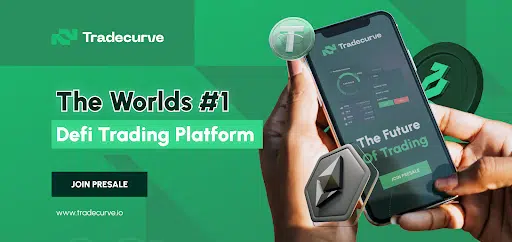The Beginner’s Guide to RUNE
A decentralized cross-chain liquidity protocol called THORChain enables users to exchange assets between different blockchain networks.
The automated market maker (AMM) approach is one of the most important developments to emerge from the decentralized finance (DeFi) field. AMMs enable cryptocurrency users to contribute a certain proportion of their holdings to a “liquidity pool.” Participants then carry out transactions using these pooled monies, using the pooled cryptocurrencies as the trading pair.
Liquidity pools are used by DeFi protocols like Uniswap and Balancer to enable peerto-peer, decentralized asset swapping between users. The bulk of AMMs, however, only let exchanges to occur within a single blockchain network, like Ethereum.
A decentralized exchange (DEX) powered by the Cosmos software development kit (SDK) is offered as a solution by THORChain. The underlying technology required to exchange cryptocurrency between blockchains that weren’t previously interoperable is provided by its AMM-based protocol.
The THORChain network is propelled by the RUNE coin. Each asset in the platform’s liquidity pools has a matching token called RUNE that goes along with it. In this way, RUNE contributes to the network’s utility and value by acting as the second token that users deposit in the liquidity pool to conduct transactions against. Additionally, RUNE is employed to protect the THORChain network, collect fees, and serve as a foundation for governance.
Who invented the THORchain?
A group of programmers developed THORChain at the 2018 Binance Dexathon. The company’s public image is heavily influenced by the THORChain community because the founders and developers have primarily maintained their anonymity.
In July 2019, the project collected $1.5 million through an initial DEX offering (IDO). The
THORChain team debuted BEPSwap as their first market product in the same month. On the BNB Chain (formerly known as Binance Smart Chain), BEPSwap is a DEX that permits trades between BEP-2 tokens.
The multichain chaosnet (MCCN), which was made available by THORChain in April 2021 and enables cross-chain exchanges between Bitcoin, Ethereum, Litecoin, and other assets. However, the network had back-to-back cyberattacks in July 2021 that cost more than $13 million.
By October 2021, four out of the five networks supported by the THORChain protocol had been restored thanks to developers’ efforts to repair problems, polish the code, and increase network security. A private token sale that same month, organized by IDEO CoLab Ventures, raised $3.75 million, supporting the project’s renewal.
How is THORchain put to use?
An ecosystem of goods and services that incorporate the cross-chain infrastructure of the network is supported by THORChain. Cross-chain swaps are made possible through platforms like THORSwap, the first multichain DEX that uses THORChain’s network as a front-end interface. Users can select the two assets they want to swap using THORSwap, and the protocol automatically determines the costs depending on network activity.
Swaps occurring on THORChain are made possible by the network’s use of a continuous liquidity pool (CLP) in which RUNE is used as an intermediary for every swap.
On THORChain, any 2 assets that are traded actually get swapped between 2 separate pools. This is due to the fact that RUNE is paired with the available assets in each liquidity pool on THORChain. For instance, a THORChain user would first exchange their USDT for RUNE on one pool before exchanging their RUNE for ETH on the next pool if they wanted to exchange USDT for ETH.
The THORChain state machine switches RUNE for one asset, moves it to a different pool, and then switches RUNE for the asset the user wants. Without the user ever having to convert their cryptocurrency into RUNE or accept custody of it, this is accomplished.
The protocol can adapt to changing liquidity need thanks to THORChain’s CLP liquidity model.
The four primary functions for THORChain participants are as follows:
- Block rewards and swap transaction fees are given to liquidity providers (LPs) in exchange for their assets that they contribute to liquidity pools. Rewards are determined by the pool’s activity and the proportion of the LP’s tokens that are represented therein.
- Swappers: Users who trade between different crypto assets on THORChain are referred to as swappers.
- Traders: THORChain is supported by arbitrage traders that look for assets that are either undervalued or overvalued on THORChain compared to their market pricing on other exchange platforms. Arbitrageurs balance liquidity pools by purchasing or selling assets on various exchanges up to the values of those assets in the pool correspond to their current market prices.
- Node operators: Node operators engage in THORChain’s proof-of-stake consensus process by bonding a specific amount of RUNE to support the network. These operators are required to maintain their anonymity and are “churned” in and out of the network based on their dependability.
Why should you purchase RUNE?
Participants in the THORChain network who perform roles such as liquidity providers, node operators, and more use RUNE. In order to take advantage of any potential arbitrage opportunities that result from imbalances in the THORChain liquidity pools, those who intend to engage in arbitrage trading on the platform may also want to own RUNE.
Interoperability between chains may also be viewed by cryptocurrency traders as a factor in the value of particular cryptocurrencies like RUNE. Speculative traders might even decide to hold RUNE just on the off chance that prices will rise when the platform adds more uses for the token in the future.
Disclaimer
Remember, investing in cryptocurrencies involves risks, and it’s important to conduct thorough research and seek professional advice before making any financial decisions.
(Please keep in mind that this post is solely for informative purposes and should not be construed as financial or investment advice.)

